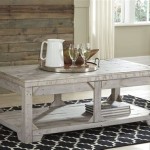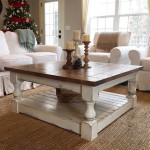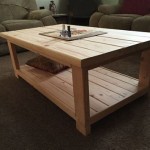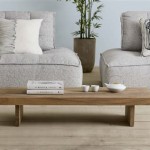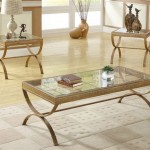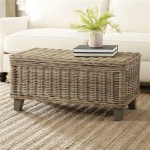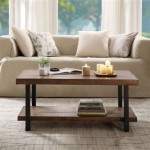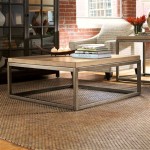How to Cover a Table with Fabric: A Comprehensive Guide
Transforming a table's appearance can be easily achieved with fabric. Whether aiming for a seasonal refresh, protecting the table surface, or creating a specific aesthetic, covering a table with fabric offers a versatile solution. This guide provides detailed instructions on how to achieve a professional-looking result, regardless of the table's shape or size.
Choosing the Right Fabric
Fabric selection plays a crucial role in the final outcome. Consider these factors when choosing the material:
- Durability: Opt for durable fabrics like cotton canvas, linen, or polyester blends, particularly for high-use tables.
- Drape: The way the fabric falls contributes to the overall look. Lighter fabrics tend to drape more fluidly, while heavier fabrics offer a more structured appearance.
- Pattern and Color: Choose patterns and colors that complement the room's decor and the intended purpose of the table.
- Maintenance: Easy-to-clean fabrics are practical, especially for dining tables. Consider stain-resistant and washable options.
Measuring Your Table
Accurate measurements are essential for a proper fit. Follow these steps:
- Tabletop: Measure the length and width of the tabletop.
- Drop Length: Determine the desired drop length, which is the distance the fabric hangs down from the tabletop edge. Standard drop lengths typically reach the floor or just above.
- Calculating Fabric Dimensions: Add twice the drop length to both the length and width measurements of the tabletop to determine final fabric dimensions.
Preparing the Fabric
Before covering the table, preparing the fabric ensures a polished finish:
- Pre-washing: Pre-wash the fabric according to the manufacturer's instructions to prevent shrinkage and color bleeding later.
- Ironing: Ironing removes wrinkles and creases, creating a smoother surface for a more professional appearance.
- Hemming (optional): Hemming the edges prevents fraying and provides a clean, finished look. Various hemming techniques, like double-fold hems or bias tape, can be employed.
Methods for Covering the Table
Several methods exist for covering a table with fabric, each offering a different aesthetic:
Simple Drape Method
This method is ideal for a casual look or temporary coverings:
- Centering: Center the fabric over the tabletop, ensuring an even drop on all sides.
- Smoothing: Smooth out any wrinkles or folds on the tabletop and along the drop.
- Optional Securing: For added security, fabric weights or clips can be used to hold the fabric in place, particularly outdoors.
Fitted Tablecloth Method
This method provides a more tailored and polished appearance:
- Securing the Fabric: Secure the fabric to the underside of the tabletop using staples, tacks, or adhesive clips. Start in the center of each side and work your way outwards, pulling the fabric taut to prevent wrinkles.
- Finishing: Use fabric glue or seam binding to cover the raw edges on the underside for a neat finish.
No-Sew Tablecloth with Fusible Bonding Web
This method offers a no-sew option for creating clean hems:
- Folding and Ironing: Fold the desired hem allowance to the wrong side of the fabric and iron to create a crease.
- Applying Fusible Bonding Web: Place fusible bonding web between the folded fabric and the main body of the fabric.
- Ironing and Bonding: Iron following the bonding web manufacturer's instructions to fuse the hem in place.
- Covering the Table: Once the hem is secured, drape the fabric over the table as described in the simple drape method or fitted tablecloth method.
Maintaining Your Fabric-Covered Table
Proper maintenance helps preserve the fabric and its appearance:
- Cleaning: Follow the fabric care instructions for cleaning. Some fabrics may be machine washable, while others require dry cleaning.
- Storage: When not in use, store the fabric-covered table in a clean, dry environment to prevent dust accumulation and damage.
- Wrinkle Prevention: Avoid folding the fabric excessively to minimize wrinkles. Steaming or ironing may be necessary to remove wrinkles after storage.
Addressing Common Challenges
Addressing potential challenges proactively ensures a successful outcome:
- Uneven Tabletops: Use padding or a table protector under the fabric to create a smooth surface on uneven tabletops.
- Pattern Matching: When using patterned fabric, ensure the pattern is aligned correctly, especially on larger tables. Cutting the fabric on a flat surface helps with pattern matching accuracy.
- Slippage: On smooth table surfaces, non-slip padding or gripper pads placed under the fabric can prevent slippage.

Fitted Table Cover The Easy Diy

Thick Velvet Fabric Meeting Table Cover Plain Color Tablecloth China Cloth And Scotland Made In Com

Home Decoration Table Cover Lace Textile Fabric Cloth China And Made In Com

Fabric Table Covers For Trade Shows And Special Events Buy

Iceberg Fabric Table Cover 30 X 72 Black Office Depot

Fabric Table Covers For Trade Shows And Special Events Buy

Decojewels Fabric Net Table Cover Size 60 X 90 At Rs 250 In New Delhi Id 21465445973

Maroon Silk Fabric Dining Table Cover Embroidery Work Size 150 250cm At Rs 1000 Piece In Jaipur

8 Foot Drape Trade Show Table Cover With Blank Unprinted Fabric Covers Made In Toronto

Picnic Table Fabric Small Fresh Household Large Coffee Temu
Related Posts

